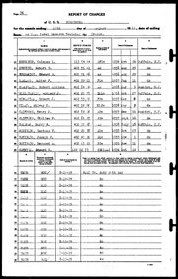The Search for Our Ancestry: Reader Questions
Angelo Coniglio |
Jan 3, 2012, 4:51 p.m.

I’ll pause in my presentation of online methods for researching genealogy to reply to questions from readers. I’ll pick up that topic again in coming issues, with Scotland and Ireland.
Q: I’m sure my grandmother was Sicilian. She spoke that language, celebrated St. Joseph’s Day and all the other holidays in Sicilian style, cooked Sicilian food, and so on, but she said she was born in Tunisia. How can that be, and how can I do research on her ancestry? – R.F.L., Kenmore, N.Y.
A: Around 1860, in the time of the unification of Sicily with the Italian peninsular states, there was extreme poverty in the Mezzogiorno (southern Italy and Sicily). After the formation of the unified Kingdom of Italy, much of the already meager wealth of the south was appropriated by northern officials and opportunists, and the peasants and laborers of the Mezzogiorno bore the brunt of the economic hardship.
This social upheaval led to the “great migration” out of the south, primarily to the United States, but also to Western Europe and even Africa, only 100 miles away across the Straits of Sicily. At the start of this period, Tunisia was under control of the Ottoman Turks, but in 1881, it became a French protectorate, until its independence in 1956.
In the late 1800s and the early 1900s, Tunis and other coastal cities of Tunisia received the immigration of tens of thousands of Italian peasants, mainly from Sicily and Sardinia. As a consequence, by the first years of the 20th century, there were more than 100,000 Italian residents in Tunisia, concentrated in the large cities of Tunis, Biserta, La Goulette, and Sfax, and even in smaller cities.
These immigrants established their own churches and neighborhoods, and while picking up the Arabic and French tongues, many retained their Sicilian and Italian language and social customs. Many made frequent trips back to their towns of origin, often convincing others to emigrate to Tunisia. Some who were dissatisfied with conditions in Tunisia eventually emigrated to the United States.
So it’s not unreasonable to think of your grandmother as Tunisian and Sicilian. Passenger manifests at Ellis Island and other U.S. ports, available on Ellis Island’s free site (www.ellisisland.org) and the subscription site Ancestry.com, often show travelers’ last place of residence.
Familiarize yourself with the names of Tunisian cities, as these manifests may indicate Tunis, Biserta, or the other large cities noted above, or smaller ones such as Zaghouan, Bouficha, Kelibia, or Ferryville. If your grandmother came here through a U.S. port, her manifest may give the name of the town she came from and even name the closest relative she left behind.
Certain Tunisian baptism, marriage, and death records have been indexed online at Geneanum.com (http://www.geneanum.com). You’ll have to read French or get a French speaker to help you, but that page gives links to helpful genealogical sites for Malta, Sicily, and Tunisia (Tunisie in French).
Clicking on the Tunisie link leads to a page with the link Bases de données (databases), and clicking there leads to choices for baptisms, marriages, and burials.
Information on parents, spouses, etc., is shown in limited text form, but copies of original documents may be ordered through the site. Caution—given names are in French: Salvatore is Sauveur, Antonio is Antoine, Pietro is Pierre, and so on.
Q: My grandfather was in the U.S. Navy during World War II. I would like to find information about his Navy experience and the ships on which he served. – M.C., Norman, Okla.
A: Ancestry.com has many historical military records, including U.S. World War II Navy muster rolls, 1938–1949. These can be searched at Ancestry.com for free at many public libraries or at a Mormon Family History Center. The database can be searched by the sailor’s name, date of service, and location.
The search results show images of original “ship musters.” Many such records have information on enlistment, assignment, rank or rating, etc. Once you find the names of the ships on which your grandfather served, search free sites like Wikipedia to get more information about the ships, including photos.
To see examples of my brother Guy’s pre-WWII musters, see
http://www.conigliofamily.com/GuyPage2.htm
|
Write to Angelo at genealogytips@aol.com or visit his
website, www.bit.ly/AFCGen.
He is the author of the book The Lady of the Wheel (La Ruotaia), based on his genealogical research of Sicilian foundlings. For more information, see www.bit.ly/SicilianStory. |
Editor's Picks
-

-

-

-

-

The Search for Our Ancestry: What Does that Mean in English?


